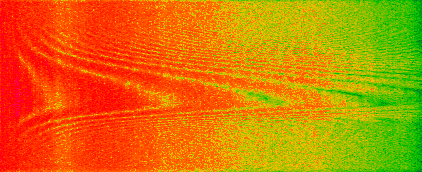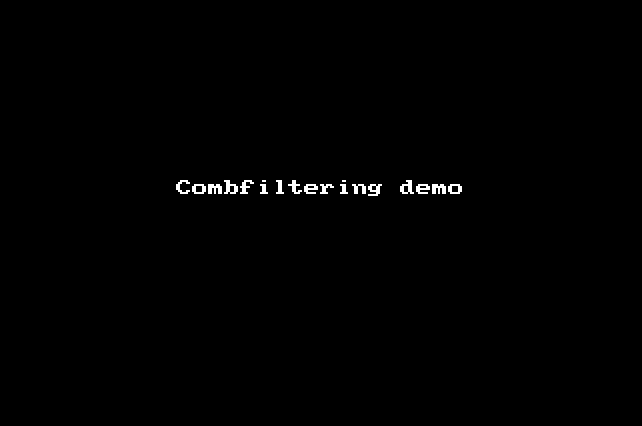Let’s talk about some situations where you’ll encounter comb filtering with just 1 mic or just your ears.
You can run into comb filtering whenever there is some kind of reflective surface near a microphone or your ears. Many times I’ve noticed the way sound coming from behind me can be bounced back at me while reading. That reflected sound would sound strange because it had to travel further to reach my ears.
Let’s jump into some demonstrations.
I have some pink noise playing out of a speaker. I have a microphone 90* off axis about a foot away. I’ll bring up a couple different objects behind the mic, parallel to the speaker. Notice how the sound gets nasty with notches in the spectrum that change with distance.
Book
Wood
Ceramic plate (similar to tile floor or walls)
What’s the point of this demonstration? Well this nasty comb filtering can happen when recording a guitar amp too close to the floor or walls. Even worse, if your mixing with a reflective high-backed chair or too close to a reflective wall, it can drastically alter what you’re hearing.
Now lets see what happens when you bring something non-reflective up to the mic. Here is a piece of 2″ acoustic foam.
There is far less coloration and comb filtering in that example.
Of course you can also use this to your advantage. Some engineers such as Steve Albini like to put mics right on the floor when recording drums. Because the distance between the mic and floor are minimal there is very little phase shift and comb filtering, all frequencies are boosted.
So I guess the point of this is, before you record have a look around, see if there is anything that is going to interfere with getting the best sound.



When I optimized my listening environment I made sure that comb filtering could not change what I hear at the monitoring spot. I chose to put my desk and rack equipment to the sides instead of in front of monitors. To me this simply sounds better and I know comb filtering does not influence my decisions in mastering. I like a clear path from monitor to ear. cheers
thats a great idea using microphones on the floor for drum recordings, im guessing PZM/boundary mics for this, although surely even though you are eliminating comb filtering from the floor reflections, you will still be capturing reflections from the ceiling (unless well treated) still causing comb filtering anyway? may have to try this out and hear the results!
if you put an omnidirectional mic extremely close to a boundary you eliminate the comb filtering because the reflection off the surface will still be in phase. On the surface of a wall/floor/ceiling there can only be constructive interference. This is a matter of micrometers.
Try pinning 3 sheets of paper to a wall or floor with a small capsule omni mic. Clamp the mic into position, then remove the paper. The result should be an increase in level for the mic and no comb filtering. A great way to make a small room sound bigger. Sorry, I don’t have any examples.
Thanks for an great idea. Comb filtering Demonstrated is could help to listen what is need. Still i always prefer to go with sound controlling products to control UN-relevant noise coming to my ears.